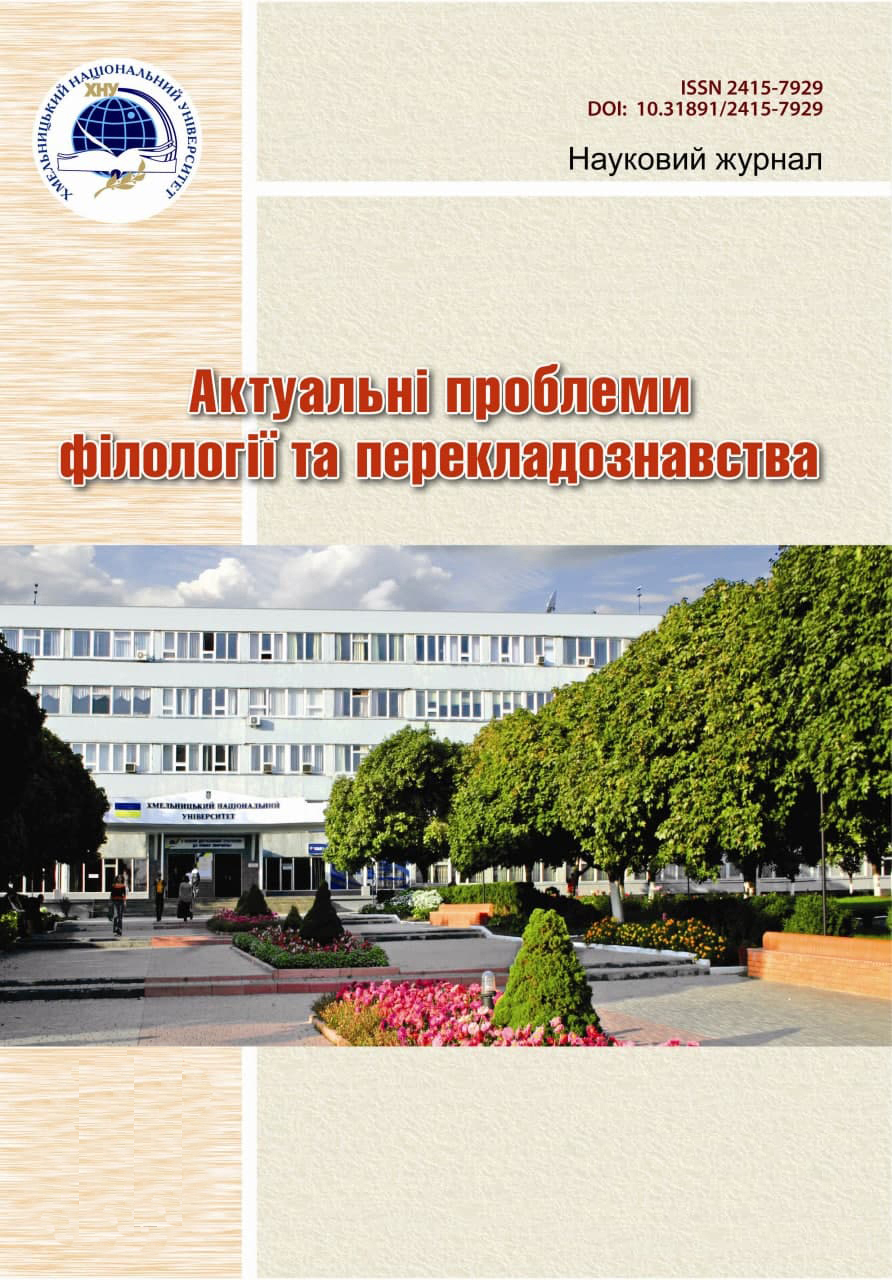REPRODUCTION OF STYLISTICALLY MARKED UNITS IN AGATHA CHRISTIE’S LITERARY DISCOUURSE(case study of the novel «And then there were none»)
DOI:
https://doi.org/10.31891/2415-7929-2024-31-9Keywords:
stylistically marked units, lexical-semantic group, syntactic group, stylistic devices, methods of translationAbstract
The article examines the lexical-semantic or semasiological and syntactic stylistically marked units of Agatha Christie's literary discourse based on the material of the novel "And then there were none". The stylistically marked units not only enhance the expressiveness of the literary text but also attract the reader's attention and are of great interest in analysing and reproducing them from one language into another. The rendering of lexical- semantic and syntactic stylistically marked units in literary texts can be a translation problem, because the successful translation of such stylistic phenomena requires the translator to have considerable literary flair, the ability to distinguish and master various stylistic devices in order to effectively and perfectly reproduce them using the means of the target language. The following methods of translation of author's stylistic devices can be distinguished: complete or full translation (retaining of trope and image); retaining the image but with the replacement of the trope; retaining of the trope with a partial replacement of the image; partial replacement of both the image and the trope with another semantically similar trope; omission of image, translation by the lexical means with direct semantics. In the lexical-semantic or semasiological group the main attention is given to such stylistic devices as antithesis, epithet, simile, metaphor, metonymy, and gradation; in the syntactic group the main attention is paid to inversion, repetitions, parallelism, break in the narrative, and chiasm. Having analysed Agatha Christie's novel «And then there were none», we found that in the lexical-semantic group of stylistically marked units, the translator, in most cases, carried out a complete translation of both the tropes and the images they embody. In several cases, we noticed the replacement of the trope and/or the replacement of the image. In the syntactic group of stylistically marked units the complete translation of stylistic devices was also carried out. Changing of syntactic devices is not usually typical, only in one case. Omission of semasiological and syntactic stylistically marked units was not found.
Downloads
Published
Issue
Section
License
Copyright (c) 2024 Юлія ДАВИДЮК (Автор)

This work is licensed under a Creative Commons Attribution-NonCommercial-NoDerivatives 4.0 International License.

